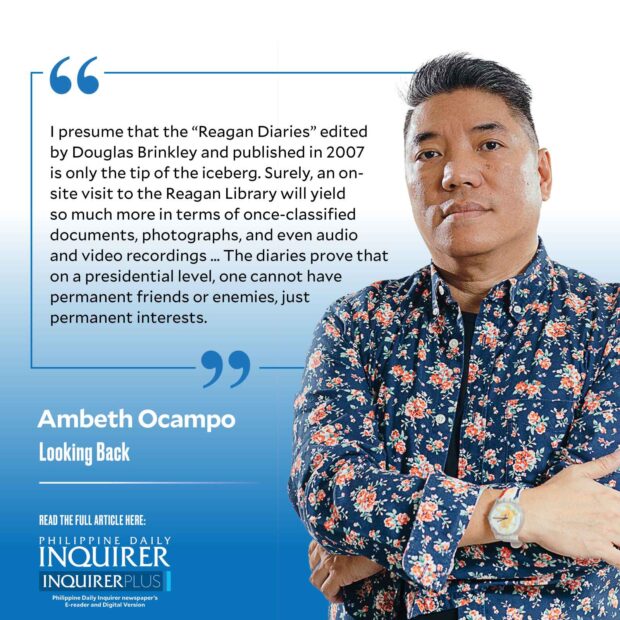US presidential diaries reveal more than history

In 1955, the United States Congress passed the Presidential Libraries Act that sought to preserve the papers, memorabilia, and other materials relating to US presidents and their administrations as a resource for research, enjoyment, and possibly inspiration. In these libraries, primary source materials are made available to the public “without regard to political affiliations or considerations” as these “belong to the American people.”
Since then, 15 presidential libraries have been established covering the terms of Herbert Hoover (1929-1933), Franklin D. Roosevelt (1933-1945), Harry S. Truman (1945-1953), Dwight D. Eisenhower (1953-1961), John F. Kennedy (1961-1963), Lyndon B. Johnson (1963-1969), Richard Nixon (1969-1974), Gerald Ford (1974-1977), Jimmy Carter (1977-1981), Ronald Reagan (1981-1989), George H. W. Bush (1989-1993), Bill Clinton (1993-2001), George W. Bush (2001-2009), Barack Obama (2009-2017), and Donald Trump (2017-2021).
Article continues after this advertisementI have only peeked into the Ford Library in Michigan. A medallion with the profiles of Imelda Marcos and Betty Ford was on display, a souvenir of a visit to Manila in December 1975. The archivist supplied me with a list of all Philippine-related material. I presume on-site research in the other presidential libraries will be fruitful, but unfortunately, postwar US presidents aren’t my area of expertise.
Last year, I wrote a column on the entries in the personal diaries of Reagan that cover the last days of Ferdinand Marcos Sr. in 1986. Checking the website again recently, I found a detailed day-to-day record of Reagan’s eight years as president. The White House had a “presidential diarist” who created a daily log collated from the various White House units that began with the president’s breakfast and detailed all the activities he did until the time he retired for bed. The log lists people he met or spoke to on the phone, meetings held including list of attendees, socials, etc.
Everything is as transparent as possible. However, many entries are missing, like times when Reagan was in Camp David, his California ranch, or even when he was out of Washington. The White House log stopped in October 1988 when the presidential diarist “fell behind in compiling it.” Gaps were filled in by the presidential library. More than the log, more detail comes from Reagan’s own personal diary.
Article continues after this advertisementFor example, the log states that in September 1984 Reagan was in New York for two days to address the United Nations. On the afternoon of Sept. 23, 1984, Reagan met with Jaime Cardinal Sin at the Waldorf Astoria Hotel. In Reagan’s personal diary, he noted: “A brief meeting with Cardinal Sin of the Philippines. He’s determined Marcos should step down.”
On Thursday, Feb. 7, 1985, the White House Log states that around 9:40 a.m., between a National Security Council meeting at the Oval Office and a photo opportunity with someone from New York, the president met with US Ambassador to the Philippines Stephen Bosworth and two NSC officers: McFarlane and Childress. That bit of data is fleshed out from Reagan’s personal diary: “Ambas. Bosworth—our man in Manila came by and reported on the situation there. Marcos is still the best man on the horizon to straighten out the problems except his ill health may prevent that. His kidneys are the problem and he puts in less than 2 hours a day and Imelda keeps people from seeing him.”
I presume that the “Reagan Diaries” edited by Douglas Brinkley and published in 2007 is only the tip of the iceberg. Surely, an on-site visit to the Reagan Library will yield so much more in terms of once-classified documents, photographs, and even audio and video recordings. On Sept. 16, 1982, after a state dinner held for Ferdinand Marcos, Reagan wrote: “I think they will go home reassured and confident of our friendship.” That personal friendship continued after Marcos was deposed in 1986 and lived in exile in Hawaii but as US president he had to work with Corazon Aquino. On April 23, 1986, after vainly seeking third countries that would take Marcos out of his hands, he wrote: “On another front, it’s been decided I should phone Pres Aquino before I leave on trip and before I phone Marcos. Frankly, I’m not happy about it.”
On Sept. 17, 1986, Cory visited the US and Reagan was told, “She was really uptight about seeing me possibly because of my friendship with Marcos.” He turned on the charm and they spoke for an hour in the Oval Office, afterward Reagan wrote: “Lunch was a lot of fun for everyone and I think she has gone home reassured and very happy.” Roughly the same words he jotted down after the 1982 Marcos visit. The diaries prove that on a presidential level, one cannot have permanent friends or enemies, just permanent interests.
Comments are welcome at aocampo@ateneo.edu
















